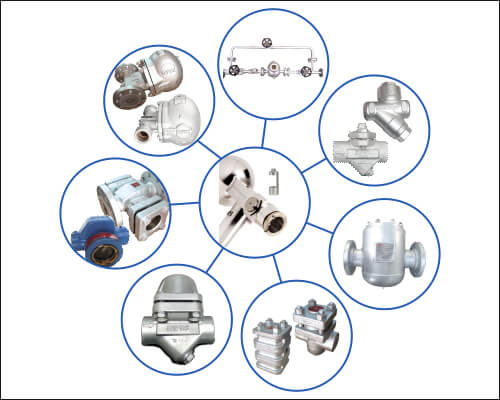
The efficiency of any boiler and heating system is contingent on steam traps. They are vital to the performance of any boiler or heating system. Regular testing will assure that they function efficiently and last for a long period of duration.
Steam traps are available in a variety of styles, however they all work using the same principle. Pressure gauges, detecting leaks and checking temperatures of outlet pipes can all be used to test for proper function.
Size
There are a variety of options for steam traps to satisfy the requirements of any vessel or pipe. You can select between A126 cast iron and stainless steel, as well as other materials.
Some steam traps steam trap cape town are constructed for heavy discharge of condensate however, others can be utilized for low or no discharge. When selecting a steam trap be sure to consider how much condensate it will draw out as well as the pressure under which it will be operating.
Another factor to consider is the type of piping that is used in the heat transfer equipment. Making sure that the steam trap closely is the same as the piping that is on the outlet side of the device will ensure that condensate flows properly to the steam trap.
If the equipment for heat transfer features two” connections to piping, a steam trap should be equipped with a 1.5 inch pipe size to accommodate the larger condensate volume.
Design
designed to release condensate as well as non-condensable gasses, steam traps are typically placed at intervals along a pipeline. They decrease pressure in pipes and also regulate the flow of steam.
Selecting the best steam trap survey is an important aspect of any steam-related project. It is essential to take into consideration the maximum operating pressure and temperature of the trap at the discharge point (CDL), the surrounding environment, and the need for minimal maintenance and longevity.
This is a crucial factor to consider when selecting the material for the steam trap’s body. The trap could be required to withstand freezing temperatures in the event that it is located outdoors or in non-heated locations. It should also accommodate any condensate return pressure required downstream.
Also, traps should be accurately sized so they are able to allow condensate flow from jacketing and equipment. This could lead to water logging and damages to heating processes, like corrosion, water hammer and air vapor lock.
Materials
The most crucial element is the steam trap. They’re used to prevent back-up of condensate within a steam line which can lead to waterhammer, and decrease the efficiency of steam.
There are a variety of steam traps that are available in the marketplace. They comprise thermodynamic, mechanical and balanced pressure traps.
Thermostatic steam traps are able to detect the temperature difference between steam & condensate. This causes the thermostatic component to move and then close the valve.
A thermostatic steam trap cape town operates with a valve that is operated by a sensor element that expands when hot condensate enters the body, and then expands when cooler condensate is present.
In the process industry steam traps are typically mentioned in the primary specifications for piping materials in the steam piping networks. These specifications include a variety of information , such as ending conditions as well as pressure ratings.
In certain instances integral strainers can also be included in steam traps to decrease the amount of fittings needed. This is particularly useful for applications that require quick venting of air, like steam jackets.
Installation
Steam traps are designed to drain condensate out of a steam-powered plant. The condensate in the system results in heat loss, which can be detrimental to the efficiency of the system.
The installation of steam traps are an an essential part of plant design and maintenance. Properly installed, the steam trap is operating effectively and discharge condensate safely.
The steam trap must be equipped with a strainer prior to the time it is installed to the outlet of the equipment, to catch the scale and dirt which can block the outlet and hinder its operation. A sight glass is installed to permit a an inspection by sight of the outlet of the trap as well as condensate drainage and other specifics.
The steam trap should be constructed to allow for a range of operating conditions, such as different steam pressures and condensate loads. For cold start-ups, the capacity of the steam trap must be increased by two to three times the volume of condensate anticipated under normal operation according to Watson McDaniel.
Leave a comment